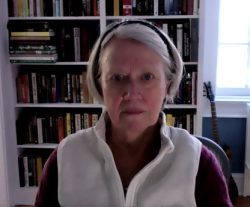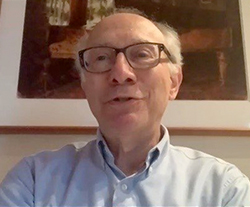Foreword

Co-Chair

Co-Chair
The release of this report, Powering Vaccine R&D: Opportunities for Transformation, by the Sabin-Aspen Vaccine Science & Policy Group coincides with a monumental achievement — the rollout of immunizations aimed at curbing the spread of COVID-19 across the globe.
Faced with the most devastating pandemic in a century, the scientific community built on a decade of prior research to bring vaccines into use in record time. That is both a cause for celebration and an impetus to develop more and better vaccines for both pandemic and endemic infectious diseases.
Future pandemics loom, and many endemic diseases cost hundreds of thousands of lives every year. Diseases such as TB, HIV and malaria are among the top 10 killers in low-income countries, while Ebola, Middle East Respiratory Syndrome (MERS), Severe Acute Respiratory Syndrome (SARS-1) and Zika continue to roam the planet, with the potential to spiral out of control. While we cannot predict precisely which other pathogens will emerge in the coming years, we can be confident that they will indeed emerge.
When the Vaccine Science & Policy Group decided to study the research and development component of the vaccine/vaccination ecosystem, SARS-CoV-2 was an unknown virus. Even so, we understood the urgency of more streamlined and efficient R&D — the many steps that bring a vaccine from design to animal and human testing and on to regulatory approval and manufacturing. COVID-19 informed our thinking, of course, but this report examines many disease-causing pathogens in considering the need for vaccines. Our goal is to glean important lessons about what has worked well in the past, and where systemic gaps remain.
As co-chairs of the vaccine group, it has been our privilege to guide a diverse, interdisciplinary group of innovators. Together, we took a deep dive into the influences and challenges that shape vaccine R&D, aiming to strengthen this crucial feature of the vaccine/vaccination ecosystem. As we have done for the past three years, we began our deliberations by commissioning a package of background papers that provide context. The group then gathered for two and a half hard-working days of collegial discussion, interspersed with expert presentations.
This year, we met virtually for the first time, and while we missed the in-person dynamics and beautiful setting of the Aspen Institute campus, our conversations were robust and productive. Based on these in-depth exchanges, we agreed on five big ideas and present them in the consensus paper that opens this report. These underscore the importance of an effective leadership structure and the imperative of vaccine science, and call for reimagined clinical trials, a restructured approach to regulatory science, and incentives to align the priorities of the many players who engage with vaccine R&D.
Several valuable background papers informed the consensus document and are included in this report:
- Understanding the Vaccine Ecosystem: Structure and Challenges, by Stefano Malvolti and Karyn Feiden
- Designing an R&D Preparedness and Response Ecosystem for Potentially Pandemic Pathogens, by Nichole Lurie and Gerald T. Keusch
- Understanding Global Vaccine Economics and Research and Development, by Jennifer Shulman, Rowena Ahsan and Kayleigh O’Malley
- The R&D Response to COVID-19: What Can We Learn for the Vaccine Ecosystem, by Anis Chagar, Michael Thomas, Linda Zuo and Mike Watson
As with the group’s two previous reports — one exploring strategies for developing a universal influenza vaccine, the other taking aim at vaccination hesitancy — we understand that advancing bold ideas about vaccine R&D is only a first step. Our members are part of influential networks who are prepared to turn these ideas into strategies that will propel them forward. The Sabin Vaccine Institute has been driving progress against vaccine-preventable diseases for decades, and the Aspen Institute has a proud tradition of promoting dialogue on some of the planet’s thorniest challenges. Together, this partnership ensures that our reports garner attention, advocates, and action.
Finally, no introduction would be complete without offering the most sincere thanks to the members of the Sabin-Aspen Vaccine Science & Policy Group, who give so generously of their time; to the Sabin Vaccine Institute and the Aspen Institute, whose partnership and dedicated staff have given us a home; and especially to Wellcome Trust and the Bill & Melinda Gates Foundation, whose generous support makes this report possible. Together, we are taking strides toward a vaccine R&D system that can produce more vaccines, more rapidly, and reduce the burden of disease in the world.

Co-chair

Co-Chair
